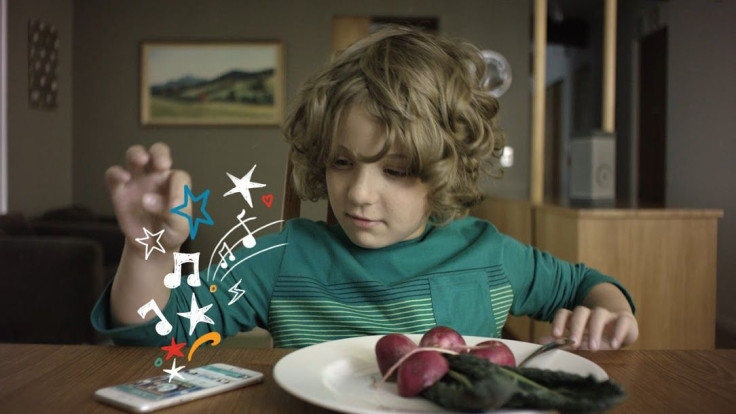Rhapsody Kids Takes Aim At Streaming Parents To Stand Apart From Spotify, Apple Music

Streaming music may be taking over millennials’ ears, but the first company to offer an on-demand streaming service has decided it wants to go after parents. On Thursday, Rhapsody unveiled Rhapsody Kids, a feature that allows users to give their young children a hands-on, age-appropriate streaming experience.
“We're all looking for ways to connect with our kids through music,” Rhapsody CFO Ethan Rudin told International Business Times. “Other entertainment verticals have focused on children, but music is one that's been largely untouched.”
While people tend to think of streaming as a nascent phenomenon dominated by young users, Rhapsody gives the lie to those perceptions. The service, which says it has 3 million paying subscribers, first launched in 2001, digital eons before Spotify or Rdio or Apple Music, and it’s amassed a large number of older users, many of whom were waiting for something like Rhapsody Kids to come along.
“Over half the customers we've surveyed have young kids,” said Nathan Rozendaal, Rhapsody’s senior director of product. “They expressed interest in a way to use Rhapsody with their kids.”
Childproof
According to Rozendaal, Rhapsody Kids is designed for children between the ages of four and eight, a user base that thinks and acts differently from its normal customers. Building something that works well meant overhauling many facets of Rhapsody’s user experience. As a result, Rhapsody Kids relies heavily on visuals rather than text, simplified navigation and hundreds of entirely separate playlists.
“We wanted to keep it really simple,” Rozendaal said.
The company also added some wrinkles that reflect young children’s listening habits. For example, songs and playlists automatically repeat, to pre-emptively sate children’s urges to hear their favorite songs over and over again. Likewise, when Kids loads, the most recently played music is one of the first things the child sees, the opposite of what an adult user sees, which is usually new content designed to encourage discovery.
"My kids go through phases where all they want to hear is the same songs over and over again for weeks," Rozendaal said. "This helps them do that.”
Kid-Tested, Parent-Approved
The other key difference can be found in Kids’ music curation. When kids open up Kids, their music is separated into two separate sections. The first consists of playlists designed by Rhapsody’s editorial team, and the other contains songs, albums and playlists added by parents.
The playlists, which vary drastically in each of the 58 countries Rhapsody is available in, consist of music made by labels and artists that target kids, like Kidz Bop and Radio Disney. Their content, Rozendaal said, was selected using a mix of listening data and human-driven curation.
"Our editors are programming hundreds and hundreds of playlists that are specifically designed for this mode," said Rozendaal, who added that many of Rhapsody's editors have children of their own.
On the other side, parent-added music can be selected by adults on either desktop or mobile and can be added to a child’s playlist with a handful of clicks or finger taps.
Growing Up
The launch of Rhapsody Kids comes at a moment when Rhapsody’s competitors are battling to grow their subscriber totals, not just by adding different kinds of audio content but by launching expensive ad campaigns and putting on splashy concerts. As streaming continues to grow -- moving beyond a deeply engaged millennial audience and into mom territory -- having a distinct feature like Kids may give Rhapsody a leg up.
“As streaming becomes more mainstream, older people are looking for ways to choose one thing or another,” Rudin said.
© Copyright IBTimes 2024. All rights reserved.





















